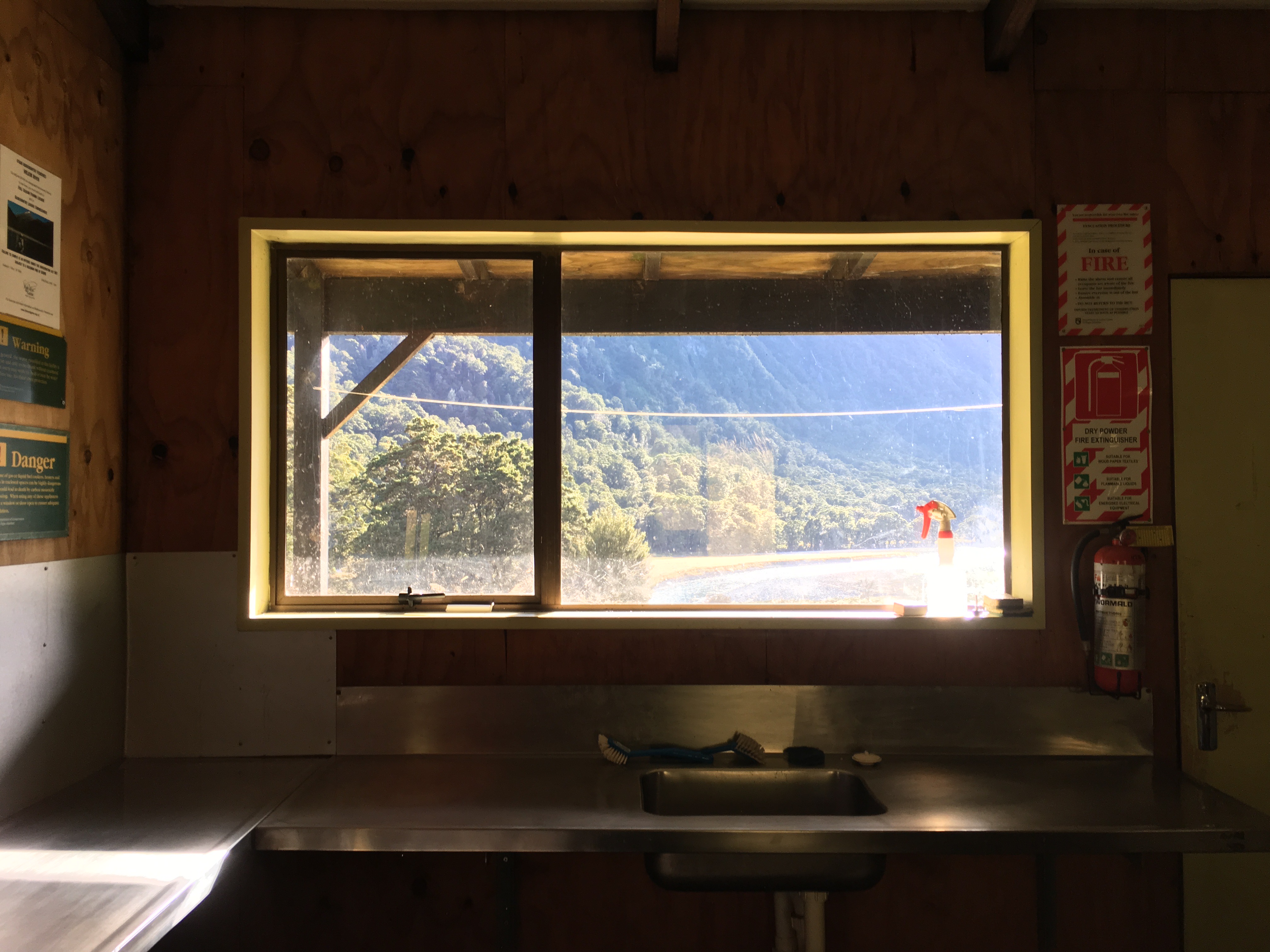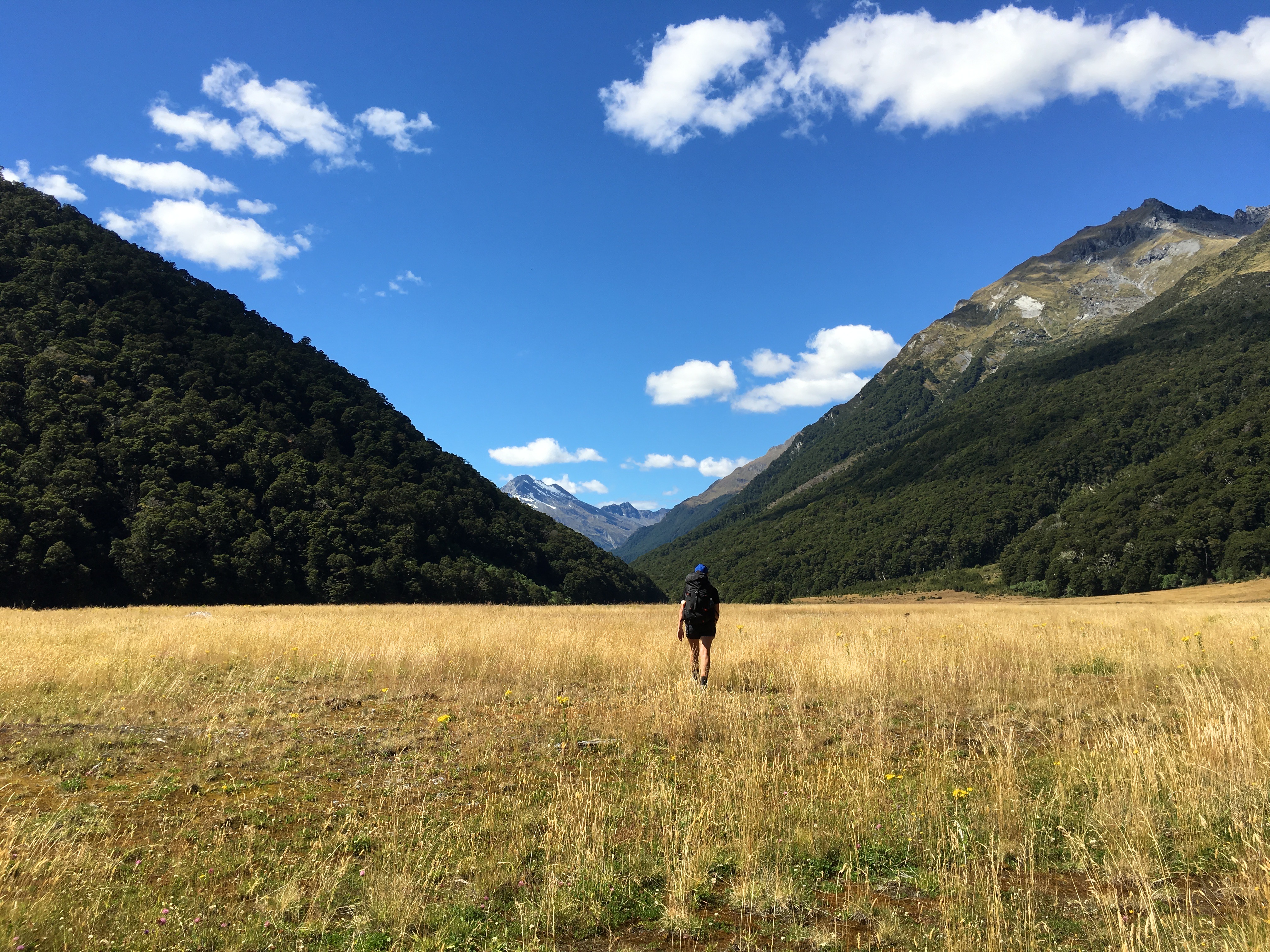I’d been planning this trip for three years and cancelled it twice—you get marooned if the rivers rise—and when I finally boarded the flight to Queenstown I’d just been given notice to move out of my house. Sitting on the tarmac, I scrolled frantically through Facebook and TradeMe, not knowing where I’d live when I returned.
At Makarora, my phone lost signal. Kate and I crossed a stile and a paddock and set off up the Young River, beside water the same cold blue as the heart of an iceberg. The next day, we crossed the Gillespie Pass in the rain, listening to kārearea calling from within the mist.
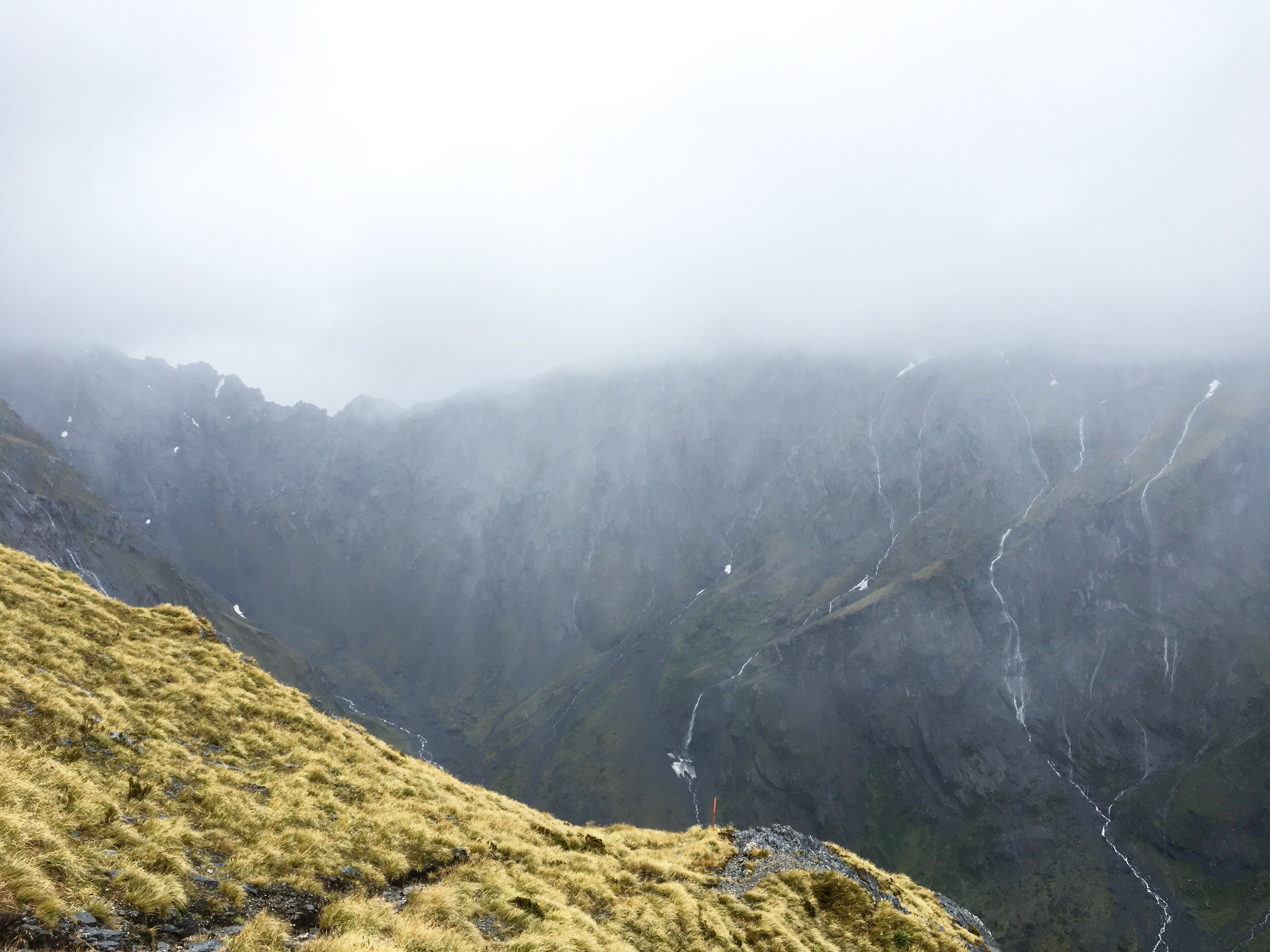
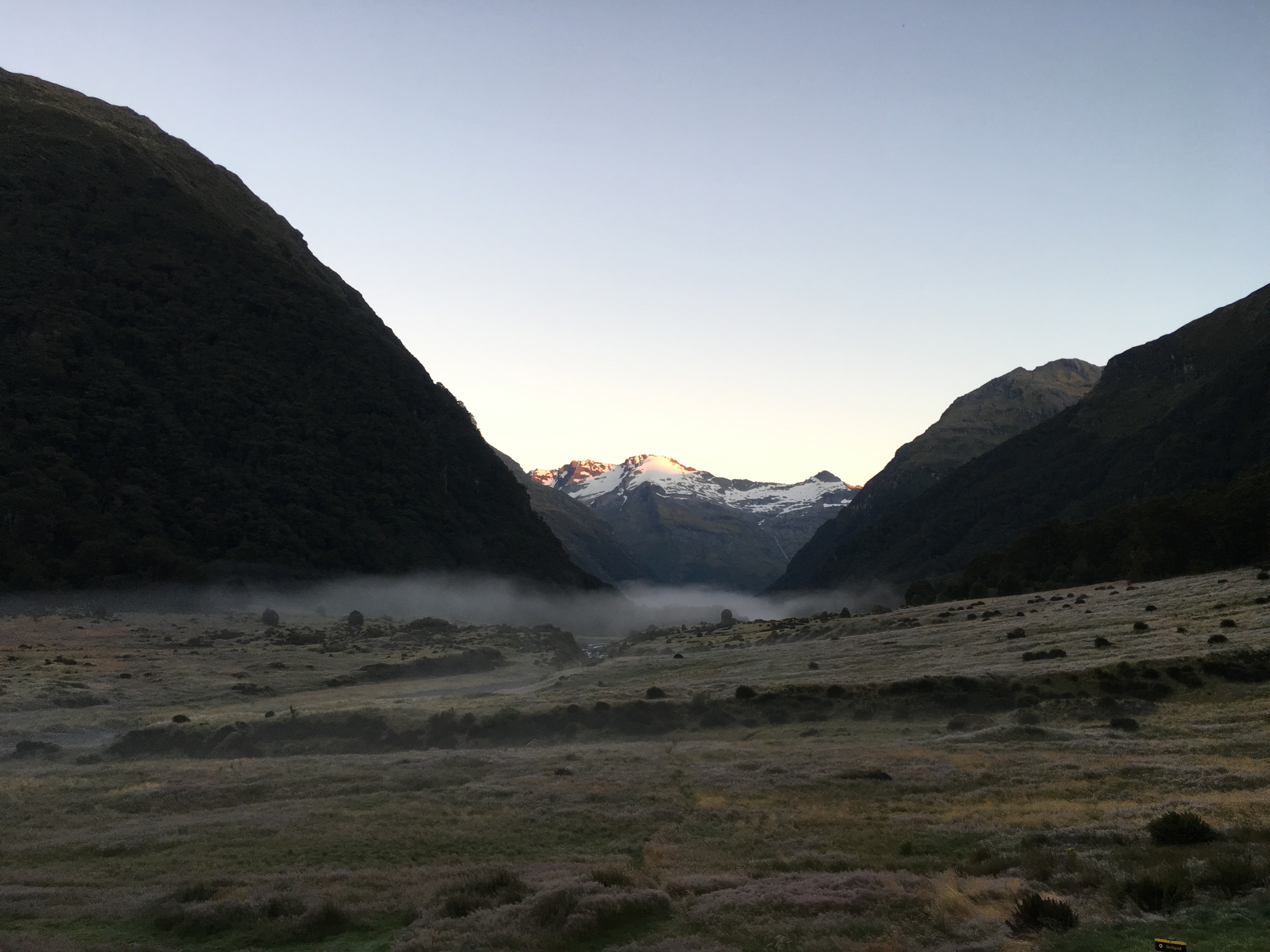
On the other side of the pass is a vast meadow where yellow tussock moves gently in the breeze. Tucked into a corner of the valley is Siberia Hut, and the bad weather meant it was nearly empty. Kate and I met a pair of American women, younger than us, who were tramping together but not together; they’d separate during the day so that they could walk alone. I didn’t understand it at the time, but I do now.
The next morning, waterfalls threaded down the valley faces, and we banded together, arms around each others’ waists, to cross the river, still running high with the rain washing down from the ranges. It was the better part of three hours to Crucible Lake, a bright-blue cup of water in the arms of the mountain. We’d been strangers twelve hours ago but now we stripped off and leapt into the water, knocking our breath away.

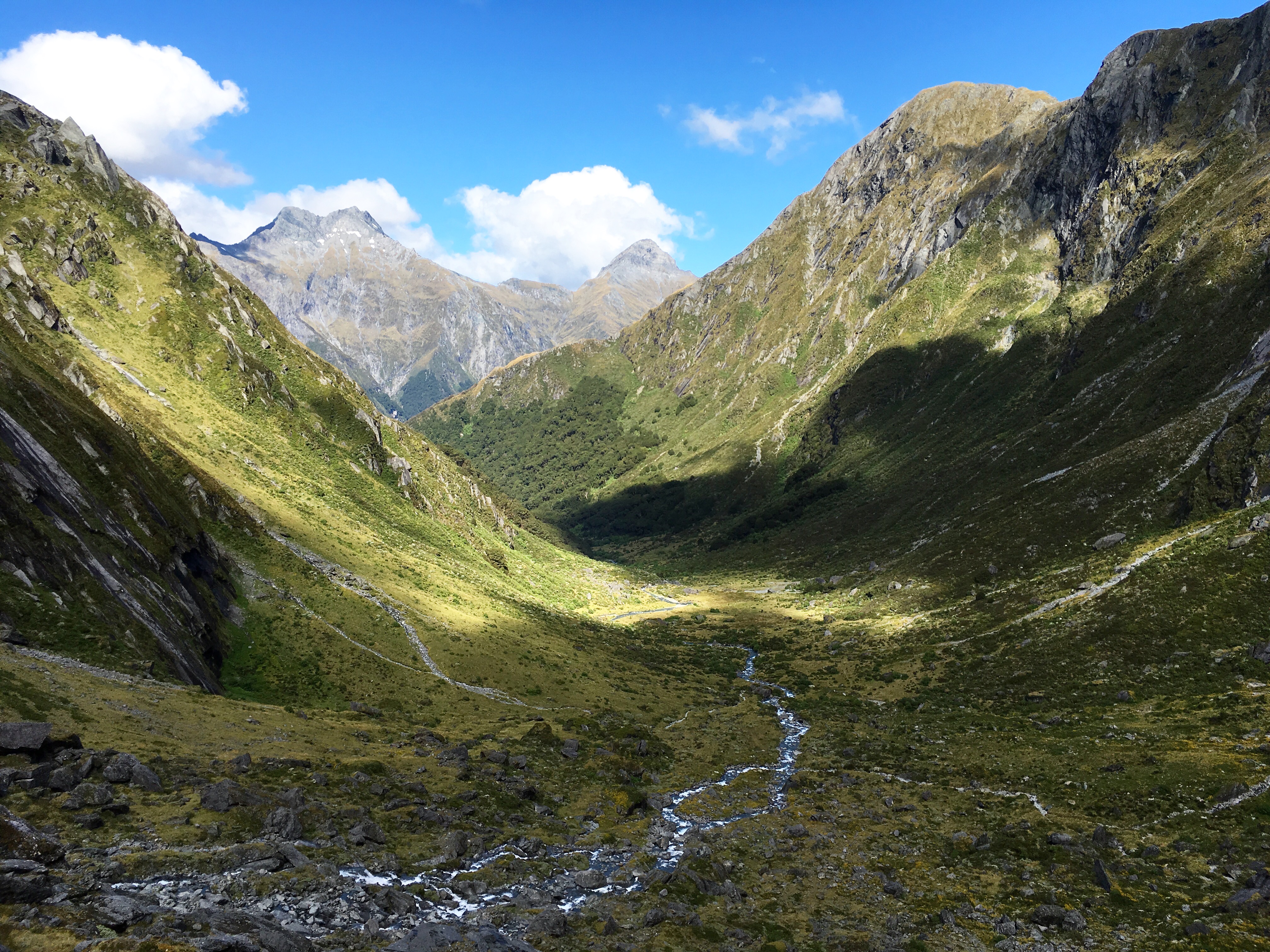
The next day dawned with low mist and a rose-coloured sky: sunshine. The Americans were going over the pass. Kate and I followed the Siberia valley down to where it met the Wilkin River, and then headed up the Wilkin valley, another rift in the mountains, crossing the braided floodplain of the river under the glare of the sun.
I’ve never hiked for longer than a couple of days. I thought I’d have more thoughts, but the opposite happened: the longer I walked, the less conscious I was, the less I attempted to put what I saw into language. A slow erasure of the brain. By the morning of the sixth day, I was down to pure experience: blue water, indigo shadows of the forest, weight of the sun.
I didn’t have anything to say to Kate, absorbed in the work of uphill, downhill, tree roots, heat, streams, the ache in my feet, the blister on my collarbone.
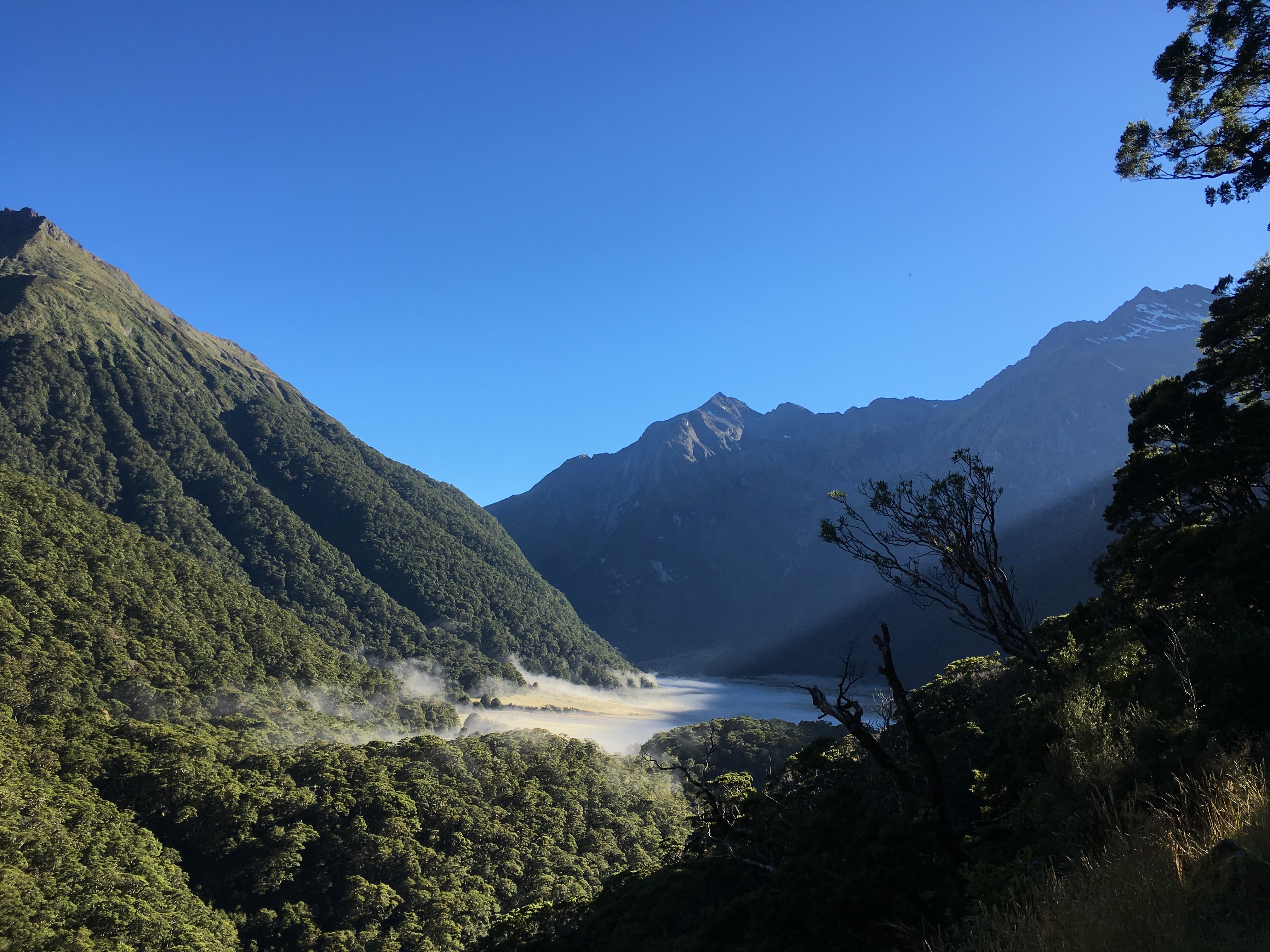
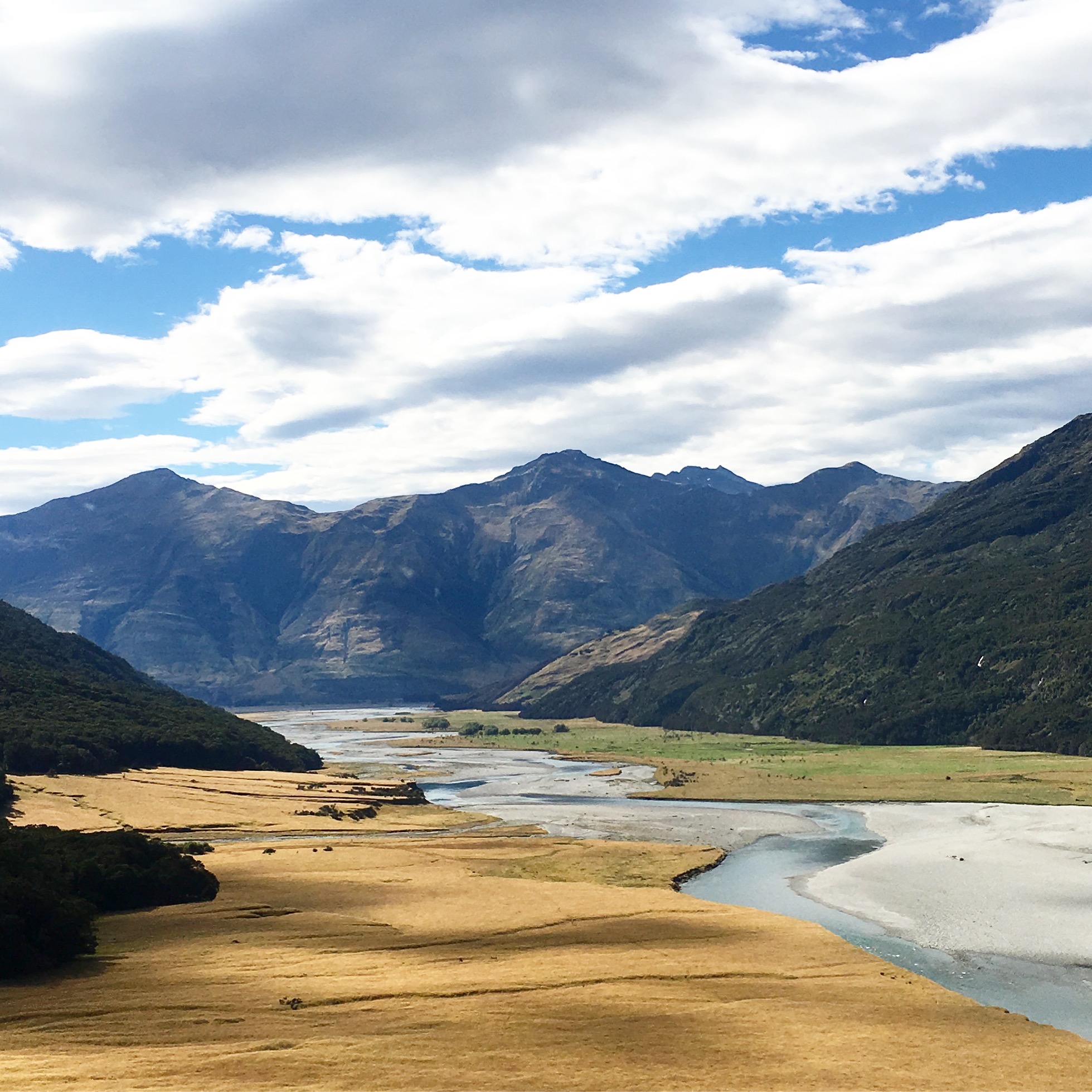
I return to that week often in my mind. It’s more vivid than any other memory of travelling I have, and I’m not sure if that’s because it was arduous, or because I paid so much attention to the details of the scenery around me, or because I felt so clearly of nothing the whole time. I didn’t care where I’d live when I returned. I couldn’t imagine returning.
